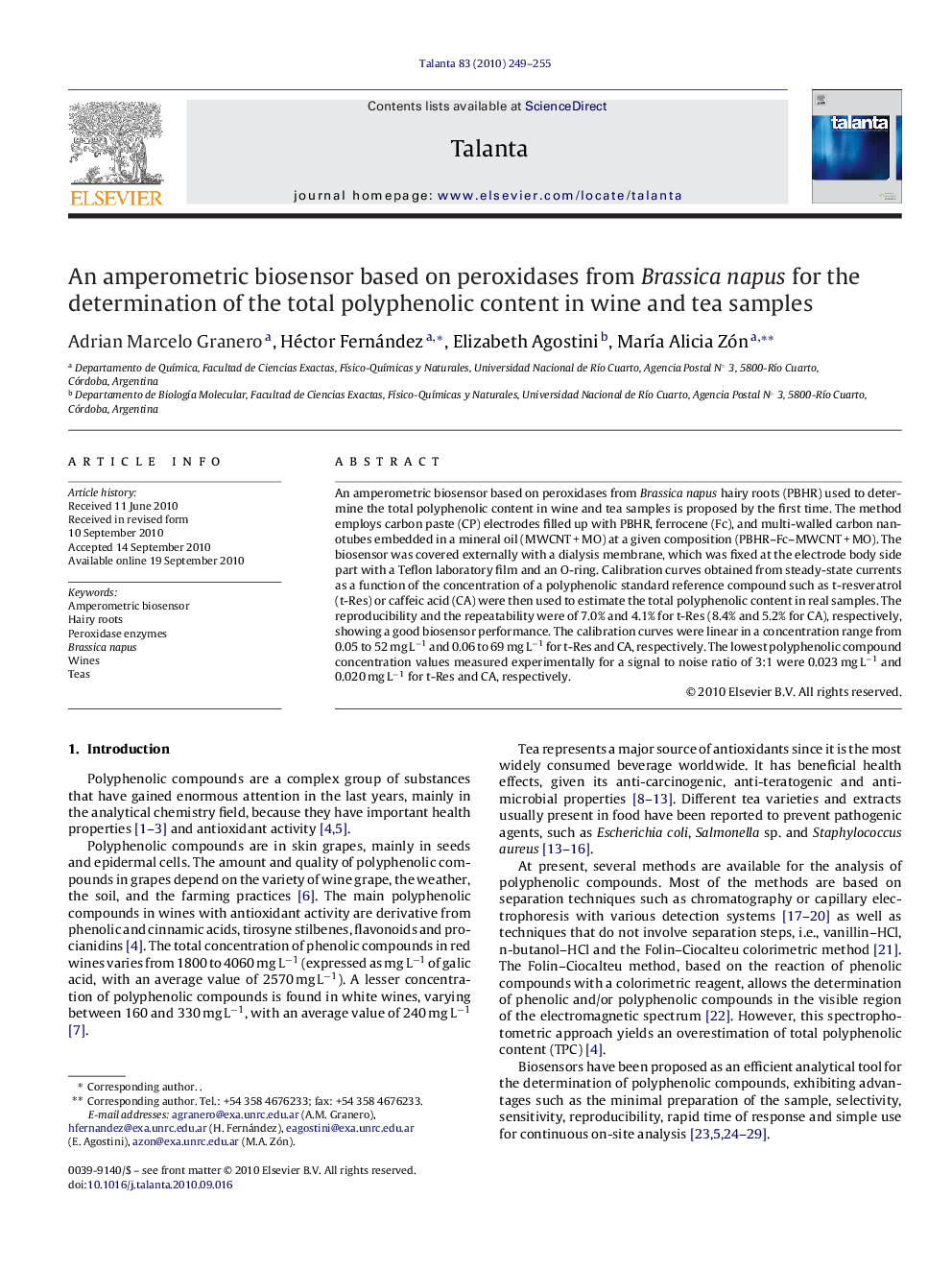| Article ID | Journal | Published Year | Pages | File Type |
|---|---|---|---|---|
| 1242488 | Talanta | 2010 | 7 Pages |
An amperometric biosensor based on peroxidases from Brassica napus hairy roots (PBHR) used to determine the total polyphenolic content in wine and tea samples is proposed by the first time. The method employs carbon paste (CP) electrodes filled up with PBHR, ferrocene (Fc), and multi-walled carbon nanotubes embedded in a mineral oil (MWCNT + MO) at a given composition (PBHR–Fc–MWCNT + MO). The biosensor was covered externally with a dialysis membrane, which was fixed at the electrode body side part with a Teflon laboratory film and an O-ring. Calibration curves obtained from steady-state currents as a function of the concentration of a polyphenolic standard reference compound such as t-resveratrol (t-Res) or caffeic acid (CA) were then used to estimate the total polyphenolic content in real samples. The reproducibility and the repeatability were of 7.0% and 4.1% for t-Res (8.4% and 5.2% for CA), respectively, showing a good biosensor performance. The calibration curves were linear in a concentration range from 0.05 to 52 mg L−1 and 0.06 to 69 mg L−1 for t-Res and CA, respectively. The lowest polyphenolic compound concentration values measured experimentally for a signal to noise ratio of 3:1 were 0.023 mg L−1 and 0.020 mg L−1 for t-Res and CA, respectively.
